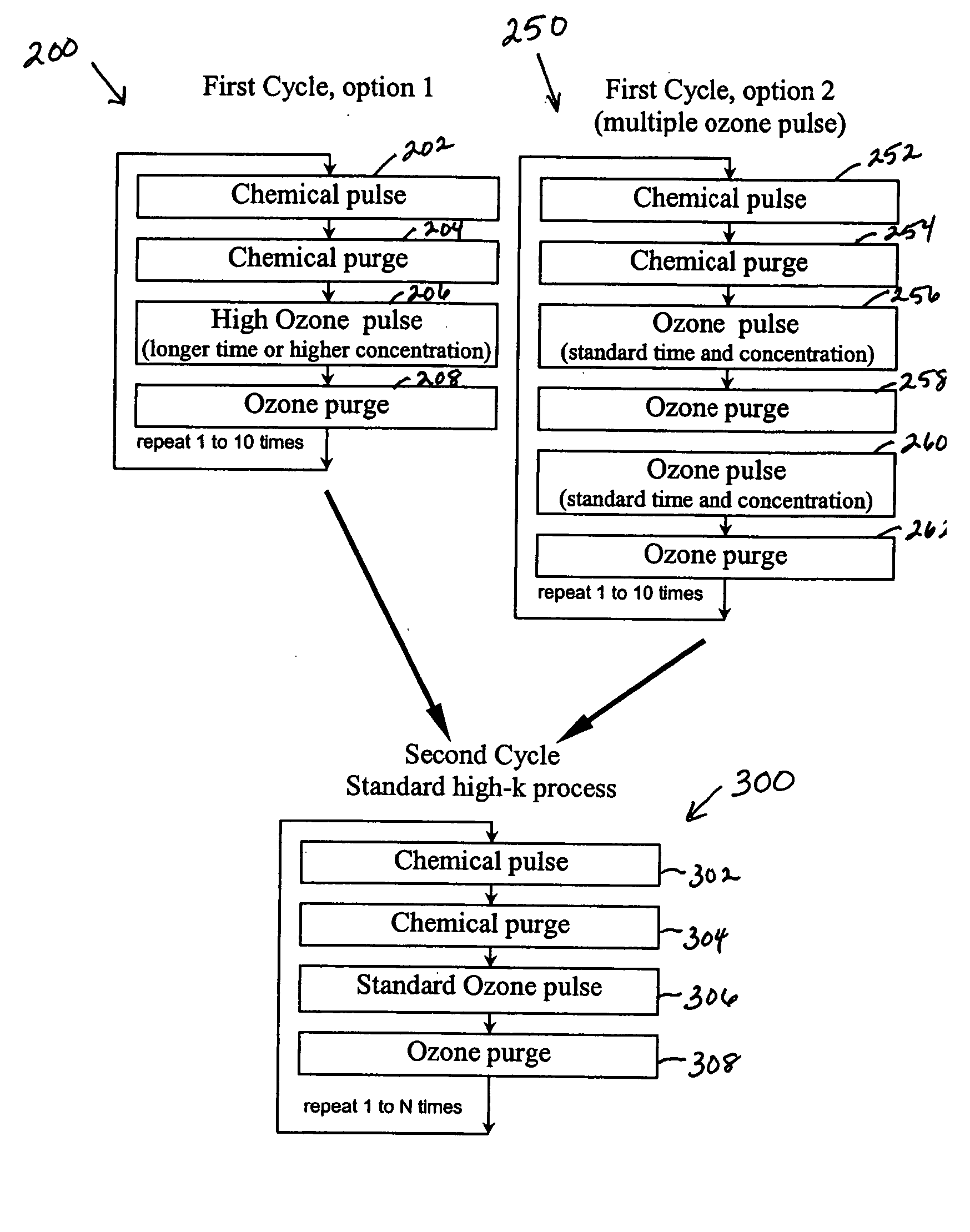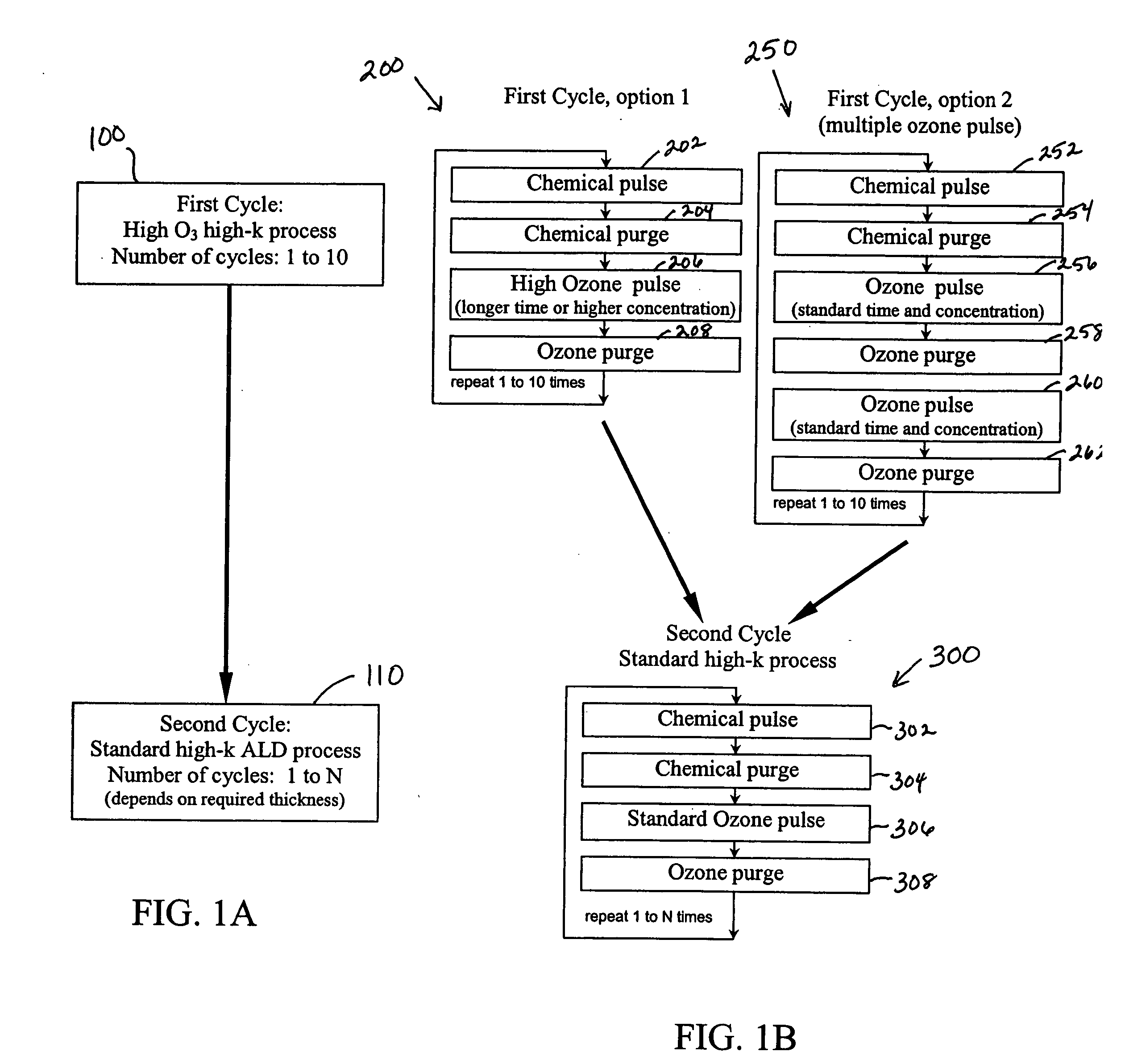Growth of high-k dielectrics by atomic layer deposition
a technology of atomic layer deposition and dielectric film, which is applied in the direction of chemical vapor deposition coating, coating, coating process, etc., can solve the problem that prior art fabrication techniques such as chemical vapor deposition (cvd) are increasingly incapable of meeting the requirements of forming these advanced thin films, and the tunneling leakage current becomes significant. , to achieve the effect of suppressing interfacial oxide growth and reducing the concentration of ozon
- Summary
- Abstract
- Description
- Claims
- Application Information
AI Technical Summary
Benefits of technology
Problems solved by technology
Method used
Image
Examples
Embodiment Construction
[0021] In general, the present invention provides atomic layer deposition (ALD) cycles carried out where ozone is selectively conveyed to a chamber in separate cycles to form substantially continuous oxide layer on the surface of a substrate where the oxide layer has an interfacial oxide layer of minimal thickness. In one embodiment, the interfacial oxide layer has a thickness of one monolayer. Preferably the interfacial oxide layer does not exceed a monolayer.
[0022] In one aspect of the present invention, a method of depositing a gate dielectric on a substrate using atomic layer deposition is provided by the steps of: independently pulsing one or more chemical precursors and ozone to a chamber, said ozone being pulsed at a high concentration and then reducing the concentration of ozone after one or more metal oxide layers have been formed on the substrate.
[0023] In another aspect of the present invention, one or more substrates are placed in an ALD reactor or chamber. In a first ...
PUM
| Property | Measurement | Unit |
|---|---|---|
| Temperature | aaaaa | aaaaa |
| Temperature | aaaaa | aaaaa |
| Temperature | aaaaa | aaaaa |
Abstract
Description
Claims
Application Information
 Login to View More
Login to View More - R&D
- Intellectual Property
- Life Sciences
- Materials
- Tech Scout
- Unparalleled Data Quality
- Higher Quality Content
- 60% Fewer Hallucinations
Browse by: Latest US Patents, China's latest patents, Technical Efficacy Thesaurus, Application Domain, Technology Topic, Popular Technical Reports.
© 2025 PatSnap. All rights reserved.Legal|Privacy policy|Modern Slavery Act Transparency Statement|Sitemap|About US| Contact US: help@patsnap.com



